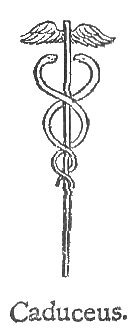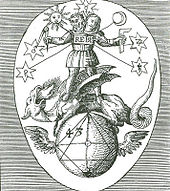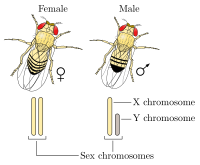Queer is an umbrella term for sexual and gender minorities who are not heterosexual or are not cisgender.
Originally meaning "strange" or "peculiar", queer came to be used pejoratively against those with same-sex desires or relationships in the late 19th century. Beginning in the late 1980s, queer activists, such as the members of Queer Nation, began to reclaim the word as a deliberately provocative and politically radical alternative to the more assimilationist branches of the LGBT community.
In the 2000s and on, queer became increasingly used to describe a broad spectrum of non-normative[note 1] (i.e. anti-heteronormative and anti-homonormative) sexual and gender identities and politics.[3] Academic disciplines such as queer theory and queer studies share a general opposition to binarism, normativity, and a perceived lack of intersectionality, some of them only tangentially connected to the LGBT movement. Queer arts, queer cultural groups, and queer political groups are examples of modern expressions of queer identities.
Critics of the use of the term include members of the LGBT community who associate the term more with its colloquial, derogatory usage, those who wish to dissociate themselves from queer radicalism, and those who see it as amorphous and trendy. The expansion of queer to include queer heterosexuality has been criticized by those who argue that the term can only be reclaimed by those it has been used to oppress.
Queer was used in mainstream society by the 20th century, along with fairy and faggot, as a pejorative term to refer to men who were perceived as "flamboyant", who were "the predominant image of all queers within the straight mind", as historian George Chauncey notes.
Starting in the underground gay bar scene in the 1950s, then moving more into the open in the 1960s and 1970s, the homophile identity was gradually displaced by a more radicalized gay identity. At that time gay was generally an umbrella term including lesbians, as well as gay-identified bisexuals and transsexuals; gender-nonconformity, which had always been an indicator of gayness, also became more open during this time. During the endonymic shifts from invert to homophile to gay, queer was usually pejoratively applied to men who were believed to engage in receptive or passive anal or oral sex with other men as well as those who exhibited non-normative gender expressions.
In the 2000s and on, queer became increasingly used to describe a broad spectrum of non-normative[note 1] (i.e. anti-heteronormative and anti-homonormative) sexual and gender identities and politics.[3] Academic disciplines such as queer theory and queer studies share a general opposition to binarism, normativity, and a perceived lack of intersectionality, some of them only tangentially connected to the LGBT movement. Queer arts, queer cultural groups, and queer political groups are examples of modern expressions of queer identities.
Critics of the use of the term include members of the LGBT community who associate the term more with its colloquial, derogatory usage, those who wish to dissociate themselves from queer radicalism, and those who see it as amorphous and trendy. The expansion of queer to include queer heterosexuality has been criticized by those who argue that the term can only be reclaimed by those it has been used to oppress.
Origins and early use
Entering the English language in the 16th century, queer originally meant "strange", "odd", "peculiar", or "eccentric." It might refer to something suspicious or "not quite right", or to a person with mild derangement or who exhibits socially inappropriate behaviour. The Northern English expression "there's nowt so queer as folk", meaning "there is nothing as strange as people", employs this meaning. Related meanings of queer include a feeling of unwellness or something that is questionable or suspicious. The expression "in Queer Street" is used in the United Kingdom for someone in financial trouble. Over time, queer acquired a number of meanings related to sexuality and gender, from narrowly meaning "gay or lesbian" to referring to those who are "not heterosexual" to referring to those who are either not heterosexual or not cisgender (those who are LGBT+).Early pejorative use
By the late 19th century, queer was beginning to gain a connotation of sexual deviance, used to refer to feminine men or men who were thought to have engaged in same-sex relationships. An early recorded usage of the word in this sense was in an 1894 letter by John Sholto Douglas, 9th Marquess of Queensberry.Queer was used in mainstream society by the 20th century, along with fairy and faggot, as a pejorative term to refer to men who were perceived as "flamboyant", who were "the predominant image of all queers within the straight mind", as historian George Chauncey notes.
Starting in the underground gay bar scene in the 1950s, then moving more into the open in the 1960s and 1970s, the homophile identity was gradually displaced by a more radicalized gay identity. At that time gay was generally an umbrella term including lesbians, as well as gay-identified bisexuals and transsexuals; gender-nonconformity, which had always been an indicator of gayness, also became more open during this time. During the endonymic shifts from invert to homophile to gay, queer was usually pejoratively applied to men who were believed to engage in receptive or passive anal or oral sex with other men as well as those who exhibited non-normative gender expressions.
Early 20th century queer identity
Drag Ball in Webster Hall, ca. 1920s. Many queer-identified men denigrated the "flagrant" appearances of "fairies" at such events.
In the late 19th and early 20th centuries, queer, fairy, trade, and gay signified distinct social categories within the gay male subculture. Queer was used among gay men in order to claim or self-identify with perceived normative masculine status. Many queer-identified men at the time were, according to Chauncey, "repelled by the style of the fairy
and his loss of manly status, and almost all were careful to
distinguish themselves from such men", especially because the dominant
straight culture did not acknowledge such distinctions. Trade
referred to straight men who would engage in same-sex activity; Chauncey
describes trade as "the 'normal men' [queers] claimed to be."
In contrast to the terms used within the subculture, medical
practitioners and police officers tended to use pathological terms like
"invert", "pervert", "degenerate", and "homosexual".
None of the terms, whether inside or outside of the subculture,
equated to the general concept of a homosexual identity, which only
emerged with the ascension of a binary (heterosexual/homosexual)
understanding of sexual orientation in the 1930s and 1940s. As this
binary became embedded into the social fabric, queer began to decline as an acceptable identity in the subculture.
Similar to the earlier use of queer, gay was adopted among assimilationist
men in the mid-20th century as a means of asserting their normative
status and rejecting any associations with effeminacy. The idea that queer was a pejorative term became more prevalent among younger gay men following World War II. As the gay identity became more widely adopted in the community, some men who preferred to identify as gay began chastising older men who still referred to themselves as queer by the late 1940s:
In calling themselves gay, a new generation of men insisted on the right to name themselves, to claim their status as men, and to reject the "effeminate" styles of the older generation. [...] Younger men found it easier to forget the origins of gay in the campy banter of the very queens whom they wished to reject.
Reclamation
Beginning in the late 1980s, the label queer began to be reclaimed from its pejorative use as a neutral or positive self-identifier by LGBT people. An early example of this usage by the LGBT community was by an organisation called Queer Nation, which was formed in March 1990 and circulated an anonymous flier at the New York Gay Pride Parade in June 1990 titled "Queers Read This". The flier included a passage explaining their adoption of the label queer:
Ah, do we really have to use that word? It's trouble. Every gay person has his or her own take on it. For some it means strange and eccentric and kind of mysterious [...] And for others "queer" conjures up those awful memories of adolescent suffering [...] Well, yes, "gay" is great. It has its place. But when a lot of lesbians and gay men wake up in the morning we feel angry and disgusted, not gay. So we've chosen to call ourselves queer. Using "queer" is a way of reminding us how we are perceived by the rest of the world.
Queer people, particularly queer people of color, began to reclaim queer in response to a perceived shift in the gay community toward liberal conservatism, catalyzed by Andrew Sullivan's 1989 piece in The New Republic, titled Here Comes the Groom: The Conservative Case for Gay Marriage. The queer movement rejected causes viewed as assimilationist, such as marriage, military inclusion and adoption. This radical stance and rejection of U.S. Imperialism
continued the tradition of earlier Lesbian and Gay anti-war activism,
and solidarity with a variety of leftist movements, such as seen in the
positions taken at the first two National Marches on Washington in 1979 and 1987, the radical direct action of groups like ACT UP, and the historical importance of events like the Stonewall riots.
The radical Queer groups following in this tradition of LGBT activism
contrasted firmly with, "the holy trinity of marriage, military service
and adoption [which had] become the central preoccupation of a gay
movement centered more on obtaining straight privilege than challenging
power."
Commentators noted that it was exactly these "revolting queers" (who
were now being pushed aside) who had made it safe for the
assimilationists to now have the option of assimilation.
Use
The term may be capitalized when referring to an identity
or community, rather than as an objective fact describing a person's
desires, in a construction similar to the capitalized use of Deaf. The abbreviation 'Q' has developed from common usage of queer, particularly in the United States.
Criticism
However, this reclamation and the use of the term queer is not
uncontroversial; several people and organizations, both LGBT and
non-LGBT, object to some or all uses of the word for various reasons. Some LGBT people dislike the use of queer as an umbrella term because they associate it with this political radicalism; they say that deliberate use of the epithet queer
by political radicals has, in their view, played a role in dividing the
LGBT community by political opinion, class, gender, age, and other
factors. The controversy about the word also marks a social and
political divide in the LGBT community between those (including
civil-rights activists) who perceive themselves as "normal" and who wish
to be seen as ordinary members of society and those who see themselves
as separate, confrontational and not part of the ordinary social order.
Other LGBT people disapprove of reclaiming or using queer because they consider it offensive, derisive or self-deprecating because use by heterosexuals as a pejorative continues to this day, and some LGBT people avoid queer because they perceive it as faddish slang, or alternatively as academic jargon.
Scope
Intersex and queer identities
Scholars and activists have proposed different ways in which queer identities apply or do not apply to intersex people. Sociologist Morgan Holmes describes intersex bodies as queer bodies
while documenting a heteronormativity in medical rationales for the
surgical normalization of infants and children born with atypical sex
development. Bioethicist Morgan Carpenter also describes intersex bodies as queer bodies. In "What Can Queer Theory Do for Intersex?" Iain Morland
contrasts queer "hedonic activism" with an experience of insensate
post-surgical intersex bodies to claim that "queerness is characterized
by the sensory interrelation of pleasure and shame".
Emi Koyama describes a move away from a queer identity model within the intersex movement:
Such tactic [of reclaiming labels] was obviously influenced by queer identity politics of the 1980s and 90s that were embodied by such groups as Queer Nation and Lesbian Avengers. But unfortunately, intersex activists quickly discovered that the intersex movement could not succeed under this model. For one thing, there were far fewer intersex people compared to the large and visible presence of LGBT people in most urban centers. For another, activists soon realized that most intersex individuals were not interested in building intersex communities or culture; what they sought were professional psychological support to live ordinary lives as ordinary men and women and not the adoption of new, misleading identity. ... To make it worse, the word "intersex" began to attract individuals who are not necessarily intersex, but feel that they might be, because they are queer or trans. ... Fortunately, the intersex movement did not rely solely on queer identity model for its strategies.
Queer heterosexuality
Queer is sometimes expanded to include any non-normative sexuality, including (cisgender) "queer heterosexuality". This has been criticized by some LGBT people, who argue that queer
can only be reclaimed by those it has been used to oppress: "For
someone who is homosexual and queer, a straight person identifying as
queer can feel like choosing to appropriate
the good bits, the cultural and political cache, the clothes and the
sound of gay culture, without the laugh riot of gay-bashing, teen shame,
adult shame, shame-shame, and the internalized homophobia of lived gay
experience."
Academia
In academia, the term queer and the related verb queering
broadly indicate the study of literature, discourse, academic fields,
and other social and cultural areas from a non-heteronormative
perspective. It often means studying a subject against the grain from the perspective of gender studies.
Queer studies
is the study of issues relating to sexual orientation and gender
identity usually focusing on LGBT people and cultures. Originally
centered on LGBT history and literary theory, the field has expanded to include the academic study of issues raised in biology, sociology, anthropology, history of science, philosophy, psychology, sexology, political science, ethics, and other fields by an examination of the identity, lives, history, and perception of queer people. Organizations such as the Irish Queer Archive attempt to collect and preserve history related to queer studies.
Queer theory is a field of post-structuralist critical theory that emerged in the early 1990s out of the fields of queer studies and women's studies. Applications of queer theory include queer theology and queer pedagogy.
Queer theorists, including Rod Ferguson, Jasbir Puar, Lisa Duggan, and
Chong-suk Han, critique the mainstream gay political movement as allied
with neoliberal and imperialistic
agendas, including gay tourism, gay and trans military inclusion, and
state- and church-sanctioned marriages for monogamous gay couples. Puar,
a queer theorist of color, coined the term homonationalism, which refers to the rise of American exceptionalism, nationalism, white supremacy, and patriarchy within the gay community catalyzed in response to the September 11 attacks.
Many studies have acknowledged the problems that lie within the
traditional theory and process of social studies, and so choose to
utilise a queer theoretical approach instead. One such study was
conducted in Melbourne in 2016 by Roffee and Waling. By using queer and
feminist theories and approaches the researchers were better equipped to
cater for the needs, and be accommodating for the vulnerabilities, of
the LGBTIQ participants of the study. In this case, it was a
specifically post-modern queer theory that enabled the researchers to
approach the study with a fair perspective, acknowledging all the
varieties of narratives and experiences within the LGBTIQ community.
Culture and politics
Several LGBT social movements around the world use the identifier queer, such as the Queer Cyprus Association in Cyprus and the Queer Youth Network in the United Kingdom. In India, pride parades include Queer Azaadi Mumbai and the Delhi Queer Pride Parade. The use of queer and Q is also widespread in Australia, including national counselling and support service Qlife and Q News.
Other social movements exist as offshoots of queer culture or combinations of queer identity with other views. Adherents of queer nationalism support the notion that the LGBT community forms a distinct people due to their unique culture and customs. Queercore (originally homocore) is a cultural and social movement that began in the mid-1980s as an offshoot of punk expressed in a do-it-yourself style through zines, music, writing, art and film.
The term queer migration
is used to describe the movement of LGBTQ people around the world often
to escape discrimination or ill treatment due to their orientation or
gender expression. Organizations such as the Iranian Railroad for Queer Refugees and Rainbow Railroad attempt to assist individuals in such relocations.
Art
The label queer is often applied to art movements, particularly cinema. New Queer Cinema was a movement in queer-themed independent filmmaking in the early 1990s. Modern queer film festivals include the Melbourne Queer Film Festival and Mardi Gras Film Festival (run by Queer Screen) in Australia, the Mumbai Queer Film Festival in India, the Asian Queer Film Festival in Japan, and Queersicht in Switzerland. Chinese film director Cui Zi'en titled his 2008 documentary about homosexuality in China Queer China,
which premiered at the 2009 Beijing Queer Film Festival after previous
attempts to hold a queer film festival were shut down by the government.
Multidisciplinary queer arts festivals include the Outburst Queer Arts Festival Belfast in Northern Ireland, the Queer Arts Festival in Canada, and the National Queer Arts Festival in the United States.
Television shows that use queer in their titles include the UK series Queer as Folk and its American-Canadian remake of the same name, Queer Eye, and the cartoon Queer Duck.
















